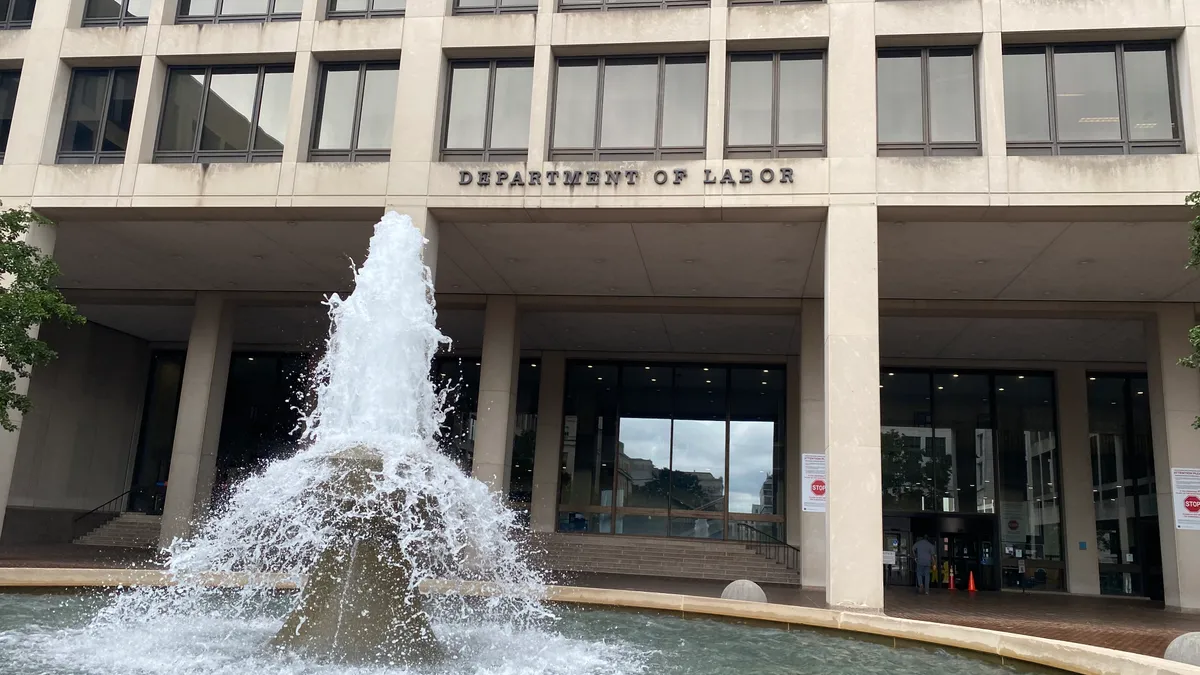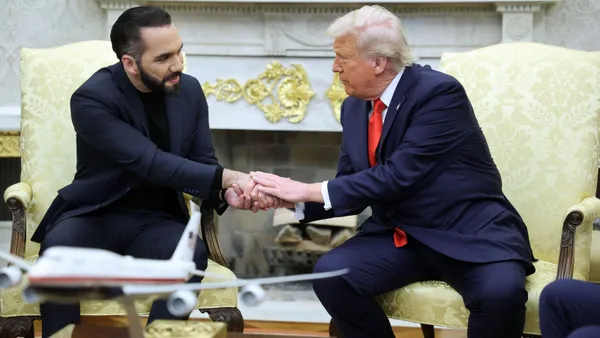The U.S. Department of Labor split its final rule updating overtime regulations under the Fair Labor Standards Act into two updates yesterday in a move that surprised employer-side attorneys, who told HR Dive the decision could create some tough compliance questions.
Russell Bruch, partner at Morgan Lewis, said the final rule is “unprecedented” in that it implements two separate increases to the FLSA’s minimum annual salary threshold from the present $35,568 set by the Trump administration in 2019.
The first update will take effect on July 1, boosting the threshold to $43,888 per year. Then, six months later, another increase on Jan. 1, 2025, will put that figure at $58,656. A separate mechanism for automatic updates every three years kicks in beginning July 1, 2027.
A final draft of the rule has yet to appear in the Federal Register, but employers are already confronted with the decision of how they should implement payroll changes, Bruch said. If an employee who is currently exempt from overtime eligibility falls beneath the salary threshold as a result of either update, an employer could either convert the employee to nonexempt status and pay overtime or increase the employee’s salary to put them over the threshold.
But that calculus, already a challenge for employers to navigate both financially and culturally, is complicated by the premise of two upcoming increases. Affected employers would need to decide whether to make such changes once in July and once again in January, Bruch said, or to adopt changes in line with the January threshold from the outset. Additional steps include communicating changes to employees, training managers on any updated timekeeping policies and calculating overtime premiums.
Given those changes, “it might make sense for some employers to just do it all at once,” Bruch said, and comply with the projected 2025 threshold rather than implement two separate changes over a six-month span. “Each employer is going to have to evaluate that.”
Complying with the new rule for a period of just six months before another change could prove “very difficult to do,” said Jim Paretti, shareholder at Littler Mendelson. He similarly stated that compliance with the 2025 threshold from the outset could be preferable for employers. “The idea [of doing] this in phases, I don’t think that’s going to be viable for many employers.”
Effect of court challenges
DOL’s motivation for splitting the threshold update into two may in part have been to create a preemptive defense against probable legal challenges, said Brett Coburn, partner at Alston & Bird.
The department specified that its July increase is based on the same methodology outlined for determining future overtime threshold increases set forth in the 2019 rule, but that the 2025 increase uses a slightly different methodology. If a federal court were to strike down the 2025 increase on the grounds that the department’s new methodology is flawed, other parts of the rule could still survive.
“My suspicion is that the folks at DOL wanted to make sure that ‘we have something that we think might stick,’” Coburn said, but he added that this is uncertain.
Both Coburn and Paretti said that the department could face a challenge similar to that which it faced under the Obama administration. In 2016, a federal judge enjoined an overtime rule that would have pushed the threshold to $47,476 per year.
“I think there’s a much more significant chance that the rule does survive at least on the lower threshold,” Coburn said. “It moves from a binary guessing game of ‘Is it going to survive?’ to, ‘Is it going to survive in whole, in part or not at all?’”
Regardless of how employers approach the potential for legal challenges, the current moment presents an opportunity for employers to revisit their exemptions more broadly, Coburn added. The final rule does not make changes to the “duties” test for overtime eligibility under the FLSA, but “now is as good a time as any to make sure we’re properly applying the duties test,” he said.













